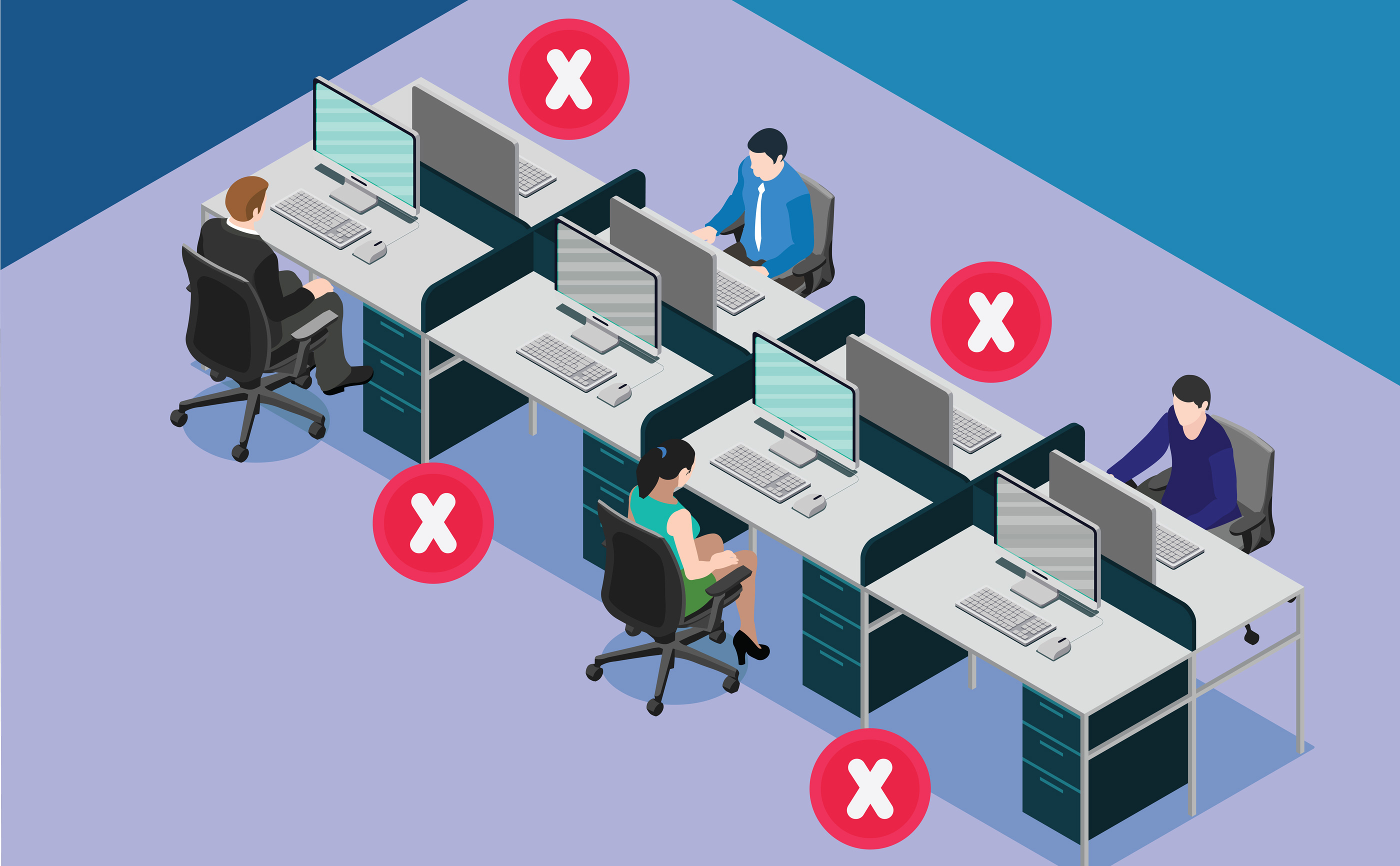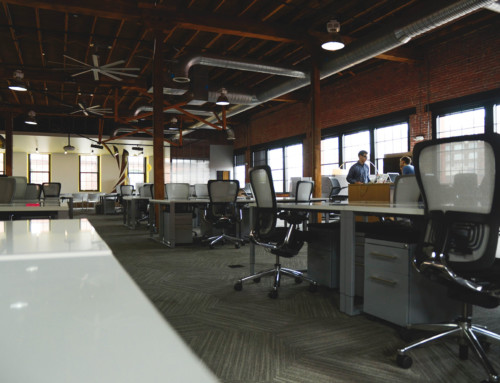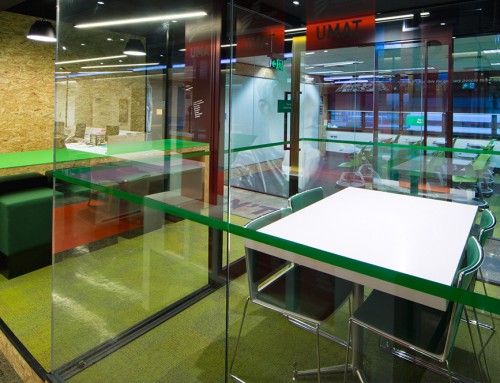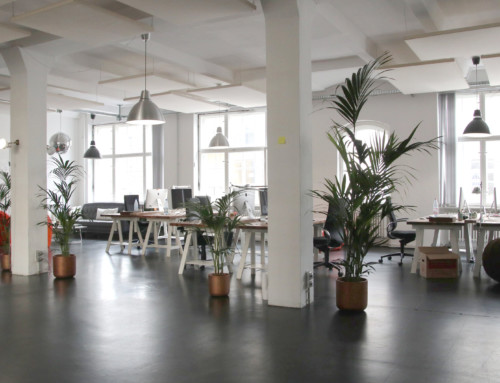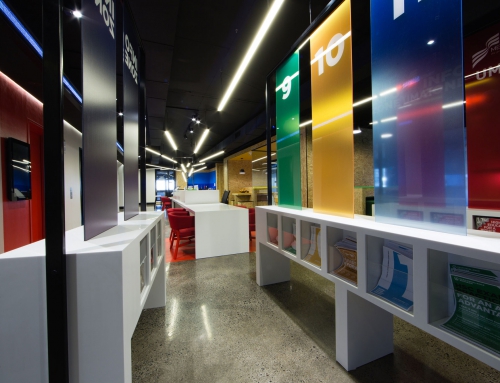Covid-19 has meant seismic changes for modern offices. Zoom, flexible hours, time-shifting and work from home have had a huge effect on the way most companies function. But as vaccines roll out around the world and the “new normal” looms on the horizon, it’s time to start thinking about how office life – and design – will change.
In this series, we’re going to take a look at some of philosophical, practical and design changes companies can deploy as more and more workers return to work in a world continuing to grapple with the pandemic.
The Desk
First up, the basic building block of the office: the workstation.
Physical distancing at work
Some companies have already redesigned their spaces – or timeshifted their staff – to ensure there’s six feet of space between workers at their desks. In this, they’ve been helped by technological progress: fax machines are no longer an office mainstay, wireless printing is everywhere and computer equipment has shrunk. Rather than increasing density, that space can now be used to spread workers out.
The end of hot desking?
Given increased concerns about hygiene, firms may opt for designated individual workstations and personal computers, rather than shared “hot” desks or communal tables. Alternatively, they may need to invest more in office cleaning.
Physical solutions
There are also a number of inexpensive, easy-to-install office features available to cut down on transmission risk. Plexiglass screens can be installed between workstations or in settings where workers need to speak face-to-face, or directly with customers. Recyclable or washable placemats can make shared settings more sanitary. The solutions, as always, will depend on the business.
Is open plan dead?
Next, we’ll look at the future of open-plan work arrangements.
Open plan is dead, long live open plan
The biggest movement in office design over the last 50 years has undoubtedly been the rise of open plan. And on face value, the need to separate workers might suggest the trend’s days are numbered. However, this view ignores the continuing advantages of open-plan offices for employers: they’re space-efficient, foster collaboration and are cheaper to clean.
Not all open-plan offices are created equal
There’s no way to ignore it: workplaces with little spacing between staff will have to be redesigned. But many modern offices were very spacious to begin with, so many employers will have room to move, literally. Selecting the right floor plan will be more important than ever.
Then there’s the matter of HVAC systems. Given the evidence that Covid-19 is mostly spread via aerosol, rather than surface contact, this is a key consideration. Older buildings will likely have to upgrade their systems or work out other ways to increase ventilation, such as by opening more windows. Open plan offices are extremely advantageous in this regard, as it’s much easier to get airflow through an open spaces, rather than closed individual offices.
There’s evidence that Covid-19 is spread faster in louder spaces where people need to shout to be heard, so office acoustics will assume new importance in 2021. Much as some employees might hate it, the open-plan office ain’t going anywhere.
Fixtures to fix problems
Relatively inexpensive design solutions can have a big impact when it comes to making offices safer. Purchasing hard furniture for office common areas that is simple and easy to clean can reduce the risk of viral transmission.
When it comes to couches and soft chairs, companies may want to invest in microfibre upholstery, which is not only hard-wearing, but can be cleaned with an alcohol wipe.
Smaller, more numerous shared appliances – toasters, fridges, microwaves, dishwashers – can also reduce the number of common touch points.
High-tech surfaces
Various manufacturers around the world have developed – or are in the process of developing
– surfaces that actively kill microbes or clean themselves. The potential application to high- traffic touch points like elevator buttons, door handles and kitchen surfaces will certainly be something for office designers to consider going forward.
Smart everything
Motion sensor lights and bathroom faucets are already in place in some modern office buildings, but the take-up of smart technology will only increase in the post-pandemic world. Voice-activated lift systems, facial recognition access and increasing remote control via smartphones are all options to look out for. As an added bonus, these technologies are likely to be easier and more energy-efficient than there manual counterparts.
If you have a few questions on creating the perfect COVID-safe office for you, consider contacting us via https://sbprojects.com.au/ or email us on info@sbprojects.com.au.

